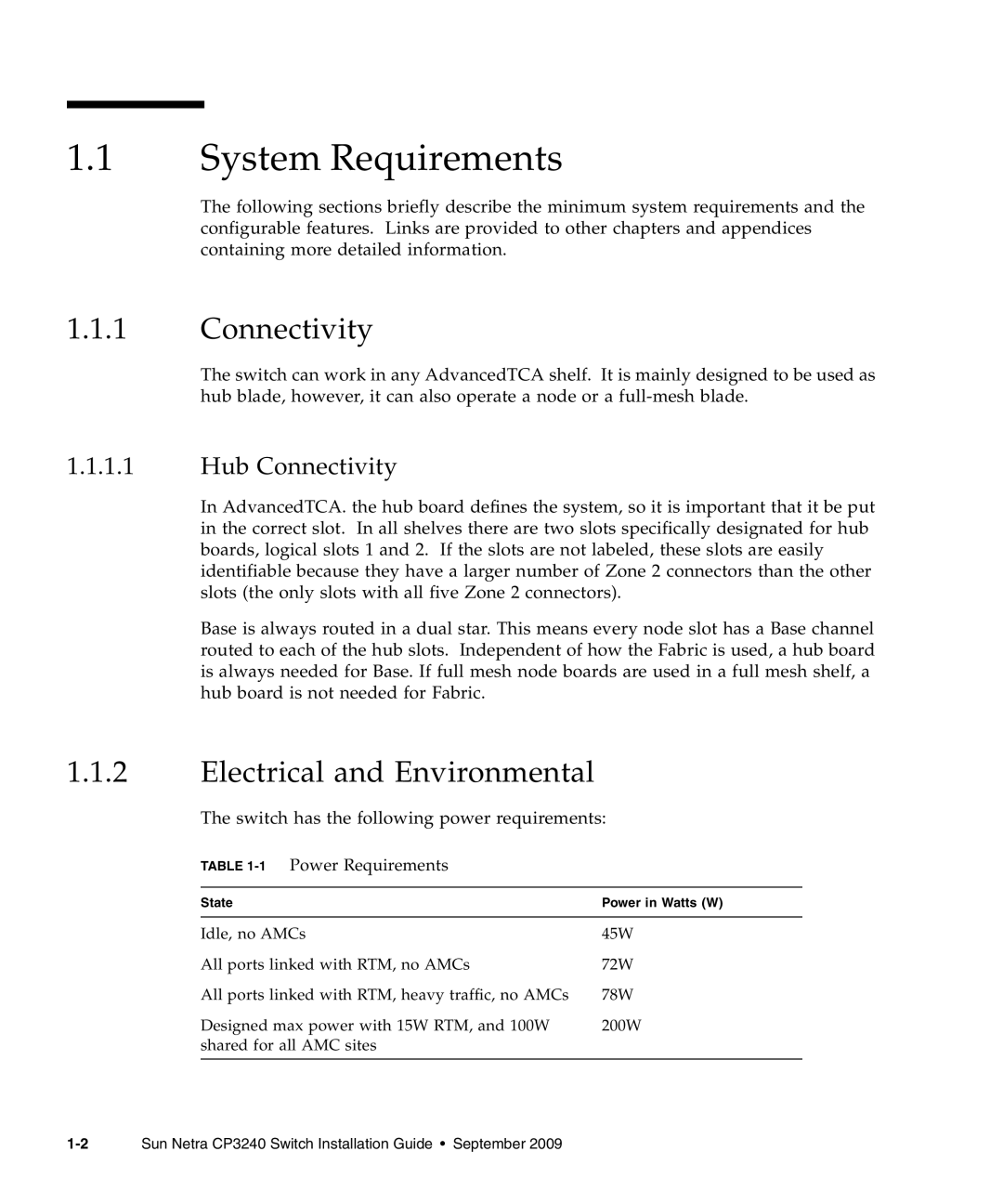
1.1System Requirements
The following sections briefly describe the minimum system requirements and the configurable features. Links are provided to other chapters and appendices containing more detailed information.
1.1.1Connectivity
The switch can work in any AdvancedTCA shelf. It is mainly designed to be used as hub blade, however, it can also operate a node or a
1.1.1.1Hub Connectivity
In AdvancedTCA. the hub board defines the system, so it is important that it be put in the correct slot. In all shelves there are two slots specifically designated for hub boards, logical slots 1 and 2. If the slots are not labeled, these slots are easily identifiable because they have a larger number of Zone 2 connectors than the other slots (the only slots with all five Zone 2 connectors).
Base is always routed in a dual star. This means every node slot has a Base channel routed to each of the hub slots. Independent of how the Fabric is used, a hub board is always needed for Base. If full mesh node boards are used in a full mesh shelf, a hub board is not needed for Fabric.
1.1.2Electrical and Environmental
The switch has the following power requirements:
TABLE 1-1 Power Requirements
State | Power in Watts (W) |
|
|
Idle, no AMCs | 45W |
All ports linked with RTM, no AMCs | 72W |
All ports linked with RTM, heavy traffic, no AMCs | 78W |
Designed max power with 15W RTM, and 100W | 200W |
shared for all AMC sites |
|
|
|
